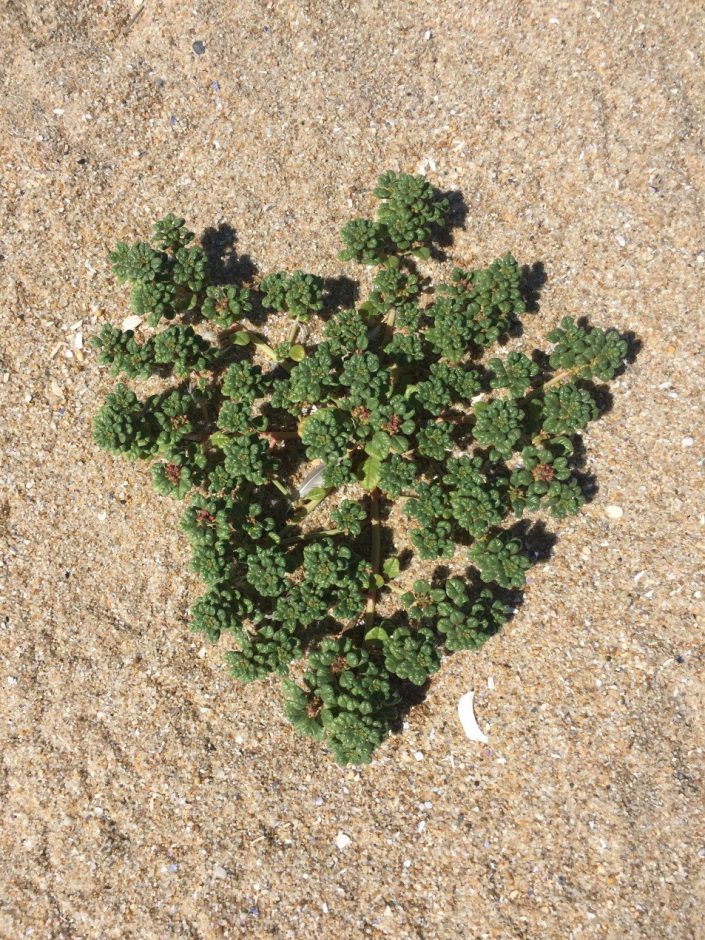Beach Plants Need Love, Too
by Meghan Kolk, Wildlife Biologist
As part of the Beach Nesting Birds team last season, I had grown accustomed to scouring the beach daily for signs of birds: tracks, scrapes, nests and eventually adorable chicks. On my free time, my beach walks are spent combing the beach for various treasures. Yesterday, I had a new reason to walk the beach and I had to re-train my focus to something that never caught my interest before. It was my first survey for the endangered beach plant, seabeach amaranth (Amaranthus pumilus).
Seabeach amaranth is a fleshy, annual plant that grows on the beach between May and November. It is usually found growing in nearly pure sand on the sparsely vegetated upper portion of the beach, between the high-tide line and the toe of the dune. The seeds are dispersed by wind and water, and are present on the beach year-round. Seabeach amaranth is federally listed as a threatened species and State-listed as an endangered species.
Seabeach amaranth completely vanished from New Jersey beaches in 1913 and remained absent until it was rediscovered in 2000. After making a short comeback, the numbers have sharply declined again and the majority of the remaining plants are concentrated on Sandy Hook. The same factors that affect the population of the beach nesting birds in New Jersey also contribute to the decline of seabeach amaranth and other vulnerable beach plants: habitat destruction and alteration, beach grooming practices and recreational activities.
It is often difficult enough to convince recreational beachgoers to share the beach responsibly with the birds; so how do we convince them to share the beach with a plant (that is not nearly as cute as a plover chick)? I thought about this question as I walked the beach, examining every plant I encountered. I can attest to the fact that plants are probably the last thing people notice at the beach, because until yesterday they went almost unnoticed by me. So, why does a beach plant need to be saved? The answer I came up with is simply that a beach is a habitat and they are part of that habitat.
A beach is as much a habitat as a forest, or a prairie or a marsh. Many people have probably never seen what a natural, unaltered beach would look like and are only familiar with a perfectly manicured beach, which no longer serves as a habitat. Native plants and wrack (organic material including seaweed, shells, driftwood, carcasses and other materials deposited on the beach by tidal action) are both essential to support a healthy beach habitat and both are continually removed by beach rakes. Luckily, we do manage to set aside a few optimal areas to remain undisturbed, and these areas benefit both beach nesting birds and beach plants.
The sad news is that I didn’t find any seabeach amaranth on my survey yesterday, but I did learn to appreciate the other beach plants I came across. I was amazed by their adaptation to this harsh environment that they thrive in, and I am committed to saving the habitat that they share with the birds that I love. As you visit the beach this summer, remember that you are visiting the home of plants and wildlife that deserve respect, and take a moment to appreciate the beach as a habitat. I keep this picture of a heart-shaped seabeach amaranth plant on the wall of my office (along with many birds) to serve as a reminder that beach plants need love too. I hope you will find a place in your heart for them as well!
